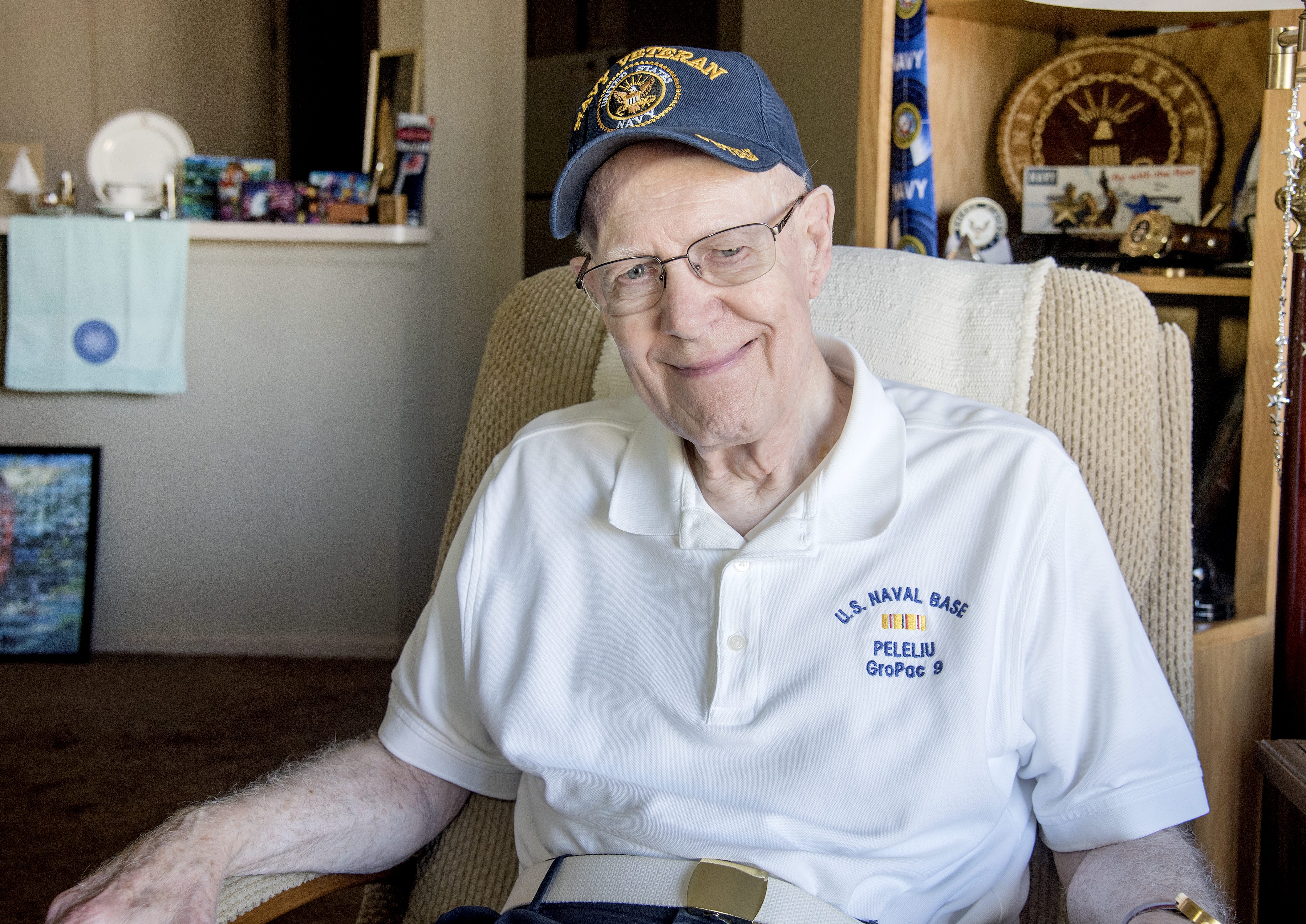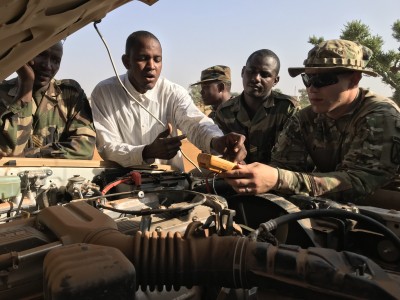David Anderson
By Paul Wood

Photo By Rick Danzl/The News-Gazette
CHAMPAIGN — David Anderson said Navy officers told him that his ship could outrun Japanese subs.
But he later came to find out that wasn’t true, when the USS Indianapolis — recently found on the bottom of the sea — sank in waters full of sharks, and some of the survivors were sent to the island where he was long stationed.
The island was Peleliu, one of the Palau Islands, about 500 miles due east of the southernmost Philippine Island, and 7 degrees above the Equator.
The temperatures of 110 degrees helped kill off Navy, Army and Marine personnel almost as much as the Japanese who held onto the coral island, where if you fell, “it would cut you up.”
Now 91, Anderson was drafted, even though he suffered some color-blindness, and found his way into the Navy, where he had the seemingly safe role of clerk, based on the shorthand skills he’d picked up in Champaign schools.
Though he downplays his own efforts, it wasn’t safe to serve during the 1944 battle for Peleliu Island.
Anderson was rushed through basic training at Great Lakes and a train trip to San Diego, then shipped off to Pearl Harbor and beyond.
“Our two-month trip over could have been dangerous, because we were running around the Pacific alone. We had a convoy to Pearl Harbor, but we were on our own from there on,” he recalls.
The ship dropped off Marines at Saipan, and then Anderson was headed to another war zone.
The battle for Peleliu was intense, and even had an unlucky-sounding code name, Operation Stalemate II.
The National Museum of the Marine Corps called it “the bitterest battle of the war for the Marines.”
Anderson said the U.S. military thought it had successfully bombed the Japanese into submission starting in September 1944.
“But the Japanese had caves with steel doors, and guns behind them,” he said.
The battle dragged on.
“I didn’t get on Peleliu until late October 1944, but the island wasn’t secured until later in November,” he said. “We were about to get on earlier, but a typhoon came up, and they sent us back out to sea.”
The island was occupied by about 11,000 Japanese, with landing beaches full of mines and heavy artillery shells buried with fuses exposed.
Even clerks carried carbines. Once, a sailor next to Anderson was hit by a round, but no one could determine if it was Japanese or friendly fire.
Bloody Nose Ridge was one of the last points taken. There were scares, like some Japanese getting down from Bloody Nose Ridge, and some from the northern islands that they didn’t take.
“But most of my time there was just like living in almost any little village. We were still there about seven months after the war was over, I guess because they didn’t have the ships to get us home,” he said.
Also staying after the war: stranded Japanese soldiers.
Lt. Ei Yamaguchi and 32 others only surrendered in April 1947.
“We couldn’t believe that we had lost. We were always instructed that we could never lose. It is the Japanese tradition that we must fight until we die, until the end,” Yamaguchi told NBC’s “Dateline” in 1995.
With his war over, Anderson returned to Champaign and worked until he was 84, mostly at Colwell Systems, but also managing a credit union. He co-owned The Unique Shop at Market Place for 11 years.
He has three children.
Do you know a veteran who could share a story about military service? Contact staff writer Paul Wood at pwood@news-gazette.com.
Read more stories from local veterans:
 Robert Alsop
CHAMPAIGN — At an outpost that could have been overrun any minute by the smallest of North Korean forces, Robert Alsop w …
Robert Alsop
CHAMPAIGN — At an outpost that could have been overrun any minute by the smallest of North Korean forces, Robert Alsop w …
 John McNeely
ARMSTRONG — Marine John McNeely held off three attacks by the Viet Cong in a short period, and survived a grenade and a …
John McNeely
ARMSTRONG — Marine John McNeely held off three attacks by the Viet Cong in a short period, and survived a grenade and a …
 Seth Carroll
NIAMEY, NIGER — After serving in Bahrain and Turkey, Sgt. Seth Carroll has equipment stored and ready for any mission th …
Seth Carroll
NIAMEY, NIGER — After serving in Bahrain and Turkey, Sgt. Seth Carroll has equipment stored and ready for any mission th …